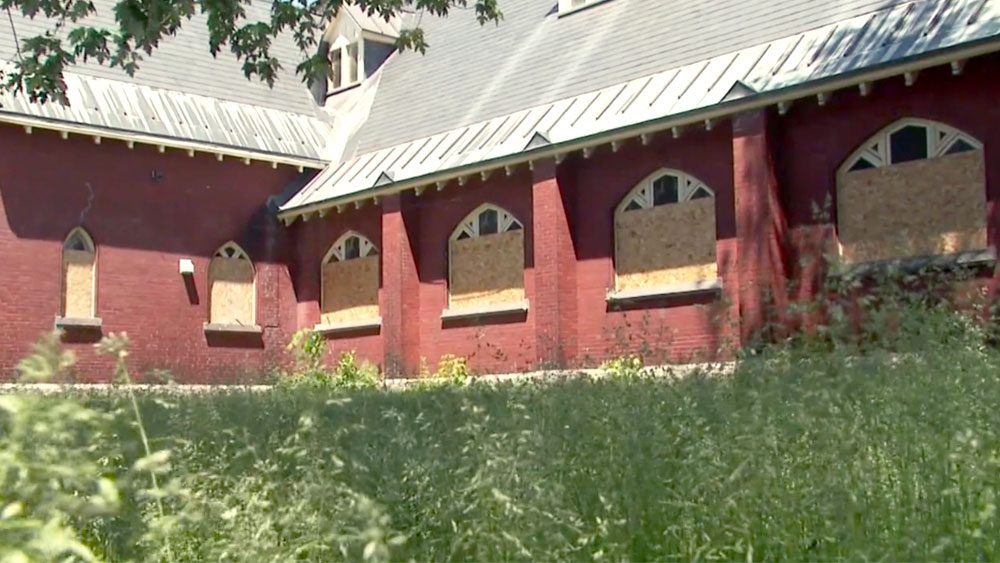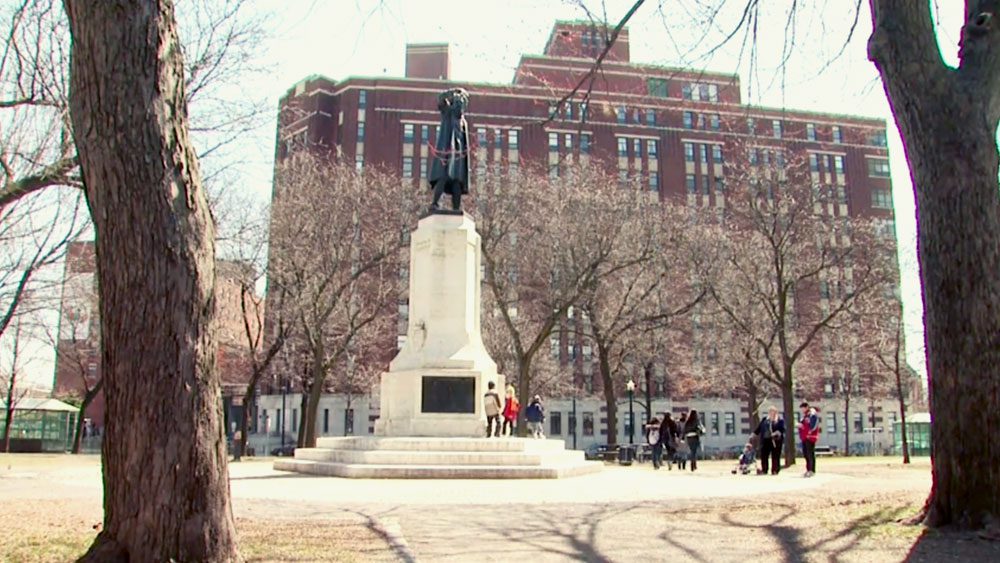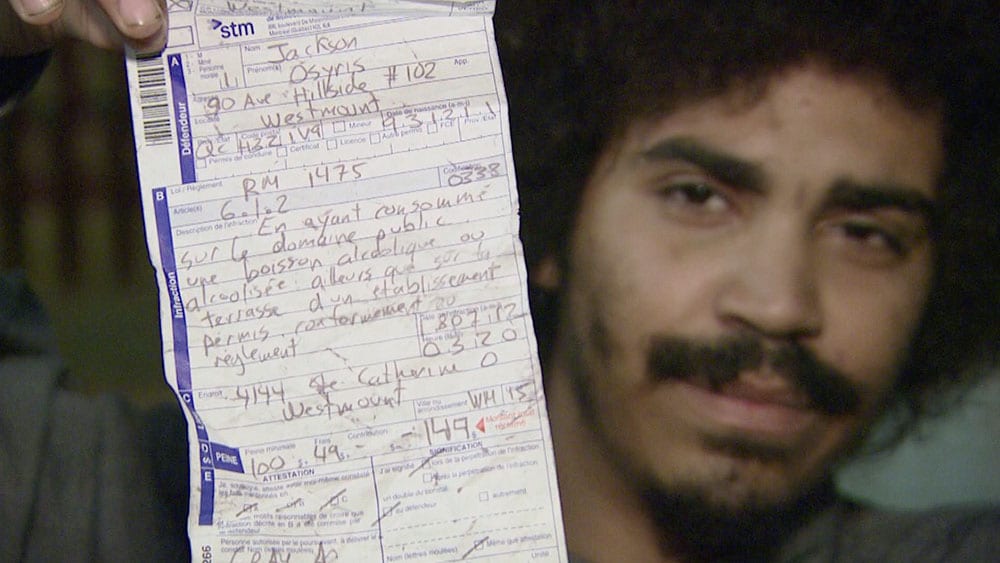Advocates who work with Montreal’s homeless say the deaths of 12 people since December is related to the closing of a downtown shelter.
“Everything that we said was going to happen when we moved has happened,” said Open Door intervention worker John Tessier.
The Open Door was located near Cabot Square, a park in downtown Montreal and a gathering spot for the city’s homeless.
It was the city’s only shelter willing to accept clients who were intoxicated, as well as the only one to welcome pets.
But on Nov. 30, after struggling to find a suitable location in the downtown core, The Open Door was forced to move out the area where most of its clients lived.
“The situation has gotten much more desperate, the people don’t have a place to go,” said Tessier.
With no shelter to turn to, people were forced into Cabot Square or back into the shadows of Montreal’s back alleys.
“When you take everything away from those who are vulnerable, and then they start to die – there’s a reason why,” Nakuset, executive director of the Native Women’s Shelter said.
“They have nowhere to go.”
(The former home of the Open Door Shelter is boarded up. “people don’t have a place to go,” says John Tessier of the Open Door shelter)
Nakuset says Cabot Square is in crisis.
She says it’s time for the city to implement concrete measures to protect and reintegrate Montreal’s urban Indigenous population.
“People who are sleep deprived and have no food, it’s like a recipe for disaster – and we’re seeing that already,” Nakuset said,
Without financial support from the city, the old downtown Anglican Church that housed the Open Door was bought by a developer in 2016.
The developer allowed the shelter to maintain operations in the church while searching for a new space, but it was ultimately forced to a new location nearly four kilometres away.
Today, the old church is boarded up to ward off squatters.
Since the move, however, former clients have repeatedly broken in, even setting up a makeshift camp in a back lot using a white tarp and some unused furniture.
For years city hall has struggled with what to do with Cabot Square.
For decades, it’s served as a downtown hub for the homeless – but now it’s located at the epicentre of a rapidly gentrifying neighbourhood.
Police officers from Precinct 12 – responsible for Cabot Square as well as Westmount, one of Montreal’s wealthiest neighbourhoods – were heavy-handed with their tickets, doling out infractions for drinking in public, smoking close to a bus shelter, jaywalking, and sleeping in the metro.
Police have handed out thousands of dollars in tickets to people who have no hope of being able to afford to pay them.
(Police in Cabot Square hand out thousands of dollars in fines to homeless people.)
And in what’s been seen as an effort to shoo homeless people away, it spent $4-million on “beautification” efforts, including paving over most of the square – a move that many have criticized as insensitive to the people who use the park to sleep.
“For 40 years, the people in the neighbourhood dealt with it, but I would say that perhaps a lot of developers thought that it may not attract the same asking price that they were hoping to get for their properties if there was a lot of homeless people and Inuit people in the square across the street,” Tessier said.
“And that’s when I would say that I noticed a more concentrated effort to move us, and to move the clients out of the square,” he added.
(The City of Montreal has spent millions of dollars on Cabot Square in a beautification program that included paving parts of the park.)
But despite the efforts to force them out, the people, and the problems still remain in Cabot Square.
Two years ago, Connie Kadlutsiak spoke at a memorial after two of her friends died. Today, like so many others, Connie’s black and white photo hangs on the Open Door’s memorial wall.
Other Inuk women, like 32-year-old Donna Pare, have vanished.
These incidents have raised questions about whether police and other higher-ups are actually doing their share to help.
Shelter directors have heard at least 12 accounts of aggravated sexual assault on the streets since the Open Door moved, Tessier said.
While police approach improved slightly after hearings for the Viens Commission – an inquiry exploring the relationships between Indigenous people and public services – came to Montreal last year, sensitivity issues persist.
“I’ve seen police laugh while a woman was giving an account of her assault, in another instance we had to wait over two hours for a policeman to get there and take a report about a rape,” he said.
This is only part of the reason Nakuset recently called an emergency meeting with the city, urging them to consider a cash injection to hire a mediator at Cabot Square; someone who would establish rapport and identify at-risk situations before they escalate and require police intervention.
Montreal Mayor Valerie Plante initially said the city would contribute 3 months’ salary for this position, but only if the shelter could raise the other nine. That amount was since increased to a six-month contribution, according to Nakuset.
“We understand that the needs are urgent and we are currently in discussion with the Quebec Ministry of Health and Social Services and community organizations in the borough to find solutions,” a City of Montreal spokesperson said in an email statement.
Read More:
Indigenous activists say homeless in Montreal unfairly targeted for ticketing
(Osyris Jackson holds up one of his latest tickets. Photo: Tom Fennario/APTN)
The Mayor was unavailable to take questions on the subject of Cabot Square.
But these activists say the solutions are obvious.
“Hope comes in the form of resources – a place, a centre like The Open Door, I believe, would be a first step,” Tessier said.
“The same people who seemed eager to have The Open Door move, seem to be missing The Open Door quite a bit now,” he added.
The developer who purchased the old, red brick church near Cabot Square reportedly placed it back on the market.
Tessier said he doesn’t accept that the city lacks the funds to buy it back, and put their own plan in motion.
“I mean there’s money to put lights on the freaking Jacques Cartier Bridge – you’ve got money for this,” he said.
Within the last month, the City of Montreal made other financial commitments: $5 million to study crowding on the metro and $5 million to open an urban beach, among others.
All this after being made aware of the problems plaguing the homeless in Cabot Square, according to Nakuset.
“Apparently Montreal is the city of reconciliation,” she said. “Uh, really? Because your actions are not showing that.”
Unlike other Canadian cities – Ottawa, Toronto, and Vancouver, for example – Montreal also lacks a dedicated Indigenous health centre.
Community organizations have proposed funding to finally get the Indigenous Health Centre of Tiohtià:ke running after years of planning.
An Indigenous-specific health centre would speed up access to detox programs and address health issues before they turn fatal, according to those making the push.
This way, women like Connie – who expressed interest in detox several times prior to her death – can more efficiently access therapeutic, life-altering services.
“Otherwise, if you take everything away, they will die. And that is what is happening,” Nakuset added.














